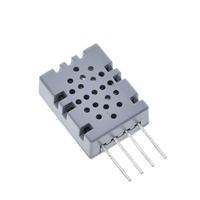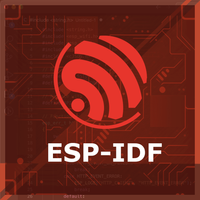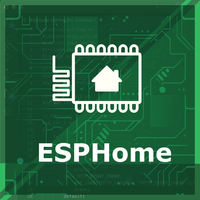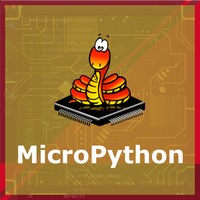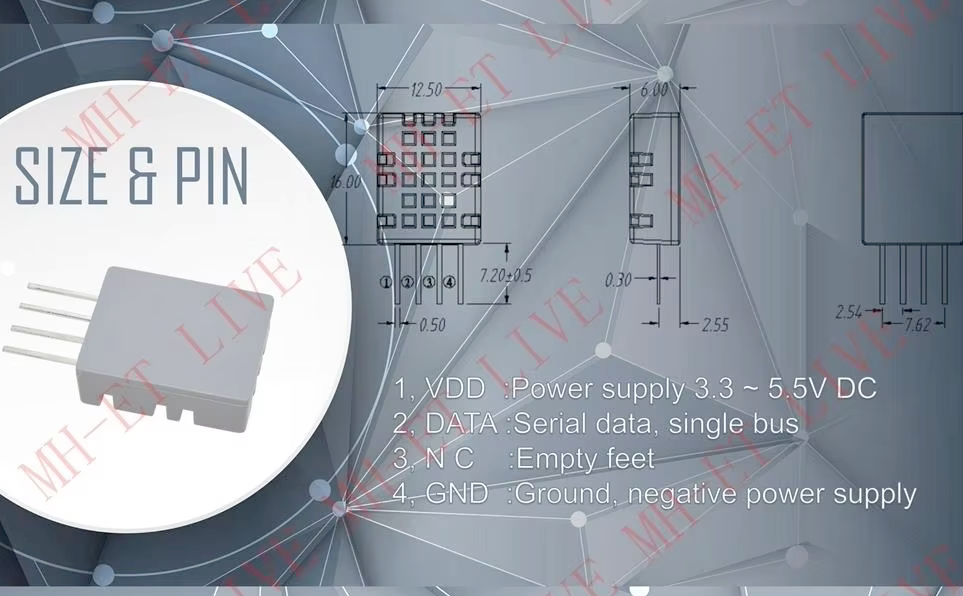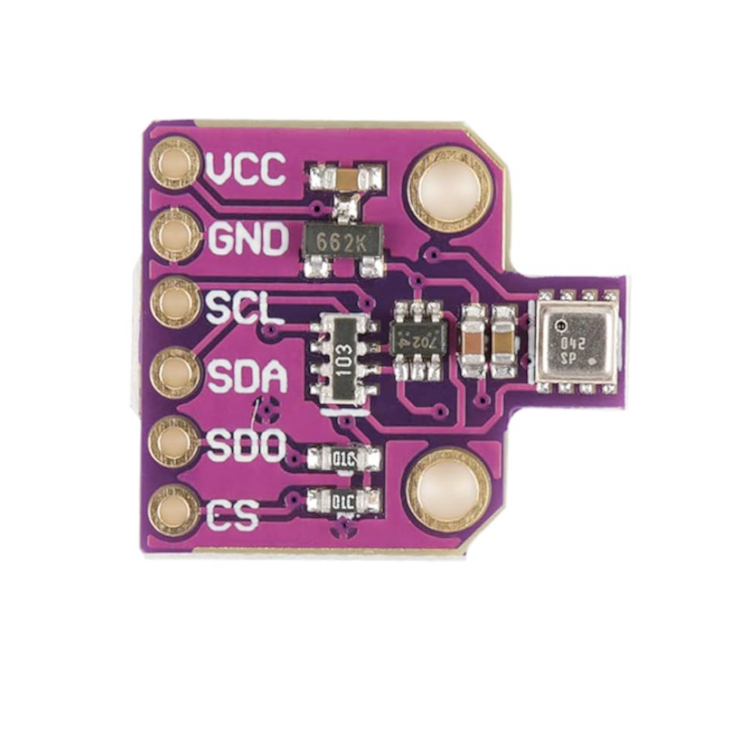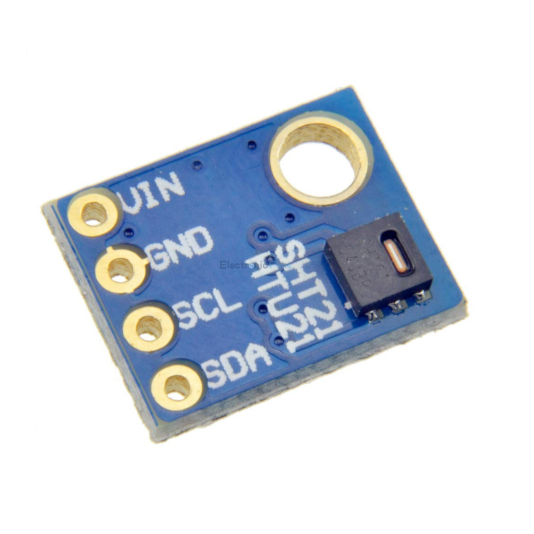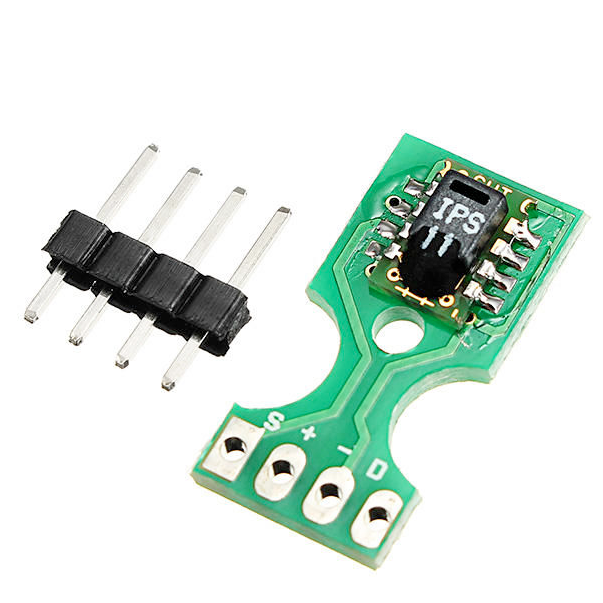ESP32 MW33 Digital Temperature and Humidity Sensor Module
Overview
The MW33 module is a reliable solution for measuring temperature and humidity, offering calibrated digital output and ease of integration with microcontrollers. With a temperature measurement range of 0°C to 50°C and a humidity range of 20% to 95%, the MW33 is suitable for various applications, including environmental monitoring and HVAC systems.
About MW33 Digital Temperature and Humidity Sensor Module
The MW33 is a digital sensor module designed for ambient temperature and humidity measurement. It integrates a DHT11 sensor, which uses a capacitive humidity sensor and a thermistor to provide accurate readings.
⚡ Key Features
- DHT11-Based Sensor – Reliable temperature and humidity measurements.
- Single-Wire Communication – Easy integration with ESP32, Arduino, and other microcontrollers.
- Compact & Efficient – Ideal for HVAC systems, environmental monitoring, and IoT projects.
With its simplicity and reliability, the MW33 is a great choice for basic climate monitoring applications. 🚀
Where to Buy



Prices are subject to change. We earn from qualifying purchases as an Amazon Associate.
Technical Specifications
Pinout Configuration
The VCC pin is used to supply power to the sensor, and it typically requires 3.3V or 5V (refer to the datasheet for specific voltage requirements). The GND pin is the ground connection and must be connected to the ground of your ESP32.
The MW33 pinout is as follows:
- VCC: Connect to a 3.3V or 5V power supply.
- DATA: Outputs digital signal; connect to a digital input on your microcontroller.
- GND: Connect to the ground of the microcontroller.
Wiring with ESP32
- Connect VCC to the 3.3V or 5V pin on the ESP32.
- Connect GND to the ground (GND) of the ESP32.
- Connect DATA to a digital GPIO pin on the ESP32 (e.g., GPIO 4).
- Place a 10kΩ pull-up resistor between the DATA pin and VCC to ensure reliable communication.
Troubleshooting Guide
Common Issues
❌ Sensor Not Detected
Issue: The MW33 sensor is not recognized by the microcontroller, resulting in failed data readings.
Possible causes include incorrect wiring, insufficient power supply, or a faulty sensor.
Solution: Verify that the sensor's VCC is connected to a 3.3V-5V power source, GND to ground, and the data output (DO) to the appropriate digital input pin on the microcontroller. Ensure that the connections are secure and that the sensor is receiving adequate power. If the problem persists, consider testing the sensor with a different microcontroller or replacing the sensor.
⚠️ Inaccurate Temperature or Humidity Readings
Issue: The MW33 sensor provides temperature or humidity readings that are inconsistent or outside the expected range.
Possible causes include environmental interference, sensor placement, or sensor malfunction.
Solution: Ensure that the sensor is placed in an environment within its operating temperature range of 0°C to 50°C and humidity range of 20% to 95%. Avoid placing the sensor near heat sources, direct sunlight, or areas with rapid temperature changes. If inaccuracies persist, consider calibrating the sensor or replacing it if it is found to be defective.
🔄 Fluctuating Readings
Issue: The sensor outputs fluctuating temperature or humidity values, leading to unreliable data.
Possible causes include unstable power supply, loose connections, or environmental factors.
Solution: Ensure that the sensor is connected to a stable power source within the specified voltage range (3.3V-5V). Check all wiring connections for stability and secure any loose connections. Consider placing the sensor in an environment with stable temperature and humidity levels to minimize fluctuations.
⏳ Delayed Response Time
Issue: The MW33 sensor exhibits slow response times to changes in temperature or humidity.
Possible causes include sensor limitations or environmental conditions.
Solution: Recognize that the MW33 sensor may have inherent response time limitations. Ensure that the sensor is exposed to the environment without obstructions that could impede airflow. If faster response times are critical, consider using a sensor with a quicker response specification.
Debugging Tips
🔍 Serial Monitor
Use the Serial Monitor to check for error messages and verify the sensor's output. Add debug prints in your code to track the sensor's state.
⚡ Voltage Checks
Use a multimeter to verify voltage levels and check for continuity in your connections. Ensure the power supply is stable and within the sensor's requirements.
Additional Resources
Code Examples
Arduino Example
#include "DHT.h"
#define DHTPIN 4 // Digital pin connected to the DHT sensor
#define DHTTYPE DHT11 // DHT 11
DHT dht(DHTPIN, DHTTYPE);
void setup() {
Serial.begin(115200);
Serial.println("MW33 Sensor Example");
dht.begin();
}
void loop() {
// Wait a few seconds between measurements
delay(2000);
// Reading temperature or humidity takes about 250 milliseconds!
float humidity = dht.readHumidity();
// Read temperature as Celsius (the default)
float temperature = dht.readTemperature();
// Check if any reads failed and exit early (to try again).
if (isnan(humidity) || isnan(temperature)) {
Serial.println("Failed to read from DHT sensor!");
return;
}
Serial.print("Humidity: ");
Serial.print(humidity);
Serial.print(" % ");
Serial.print("Temperature: ");
Serial.print(temperature);
Serial.println(" °C");
}ESP-IDF Example
#include <stdio.h>
#include "freertos/FreeRTOS.h"
#include "freertos/task.h"
#include "driver/gpio.h"
#include "dht.h"
#define DHT_PIN GPIO_NUM_4
void app_main() {
setDHTgpio(DHT_PIN);
while (1) {
printf("Reading MW33 sensor...\n");
int ret = readDHT();
errorHandler(ret);
printf("Humidity: %.1f%%\n", getHumidity());
printf("Temperature: %.1f°C\n", getTemperature());
vTaskDelay(2000 / portTICK_PERIOD_MS);
}
}readDHT() function reads the sensor data, and the humidity and temperature values are retrieved using getHumidity() and getTemperature() functions, respectively. The readings are printed to the console every 2 seconds.ESPHome Example
sensor:
- platform: dht
pin: GPIO4
model: DHT11
temperature:
name: "Living Room Temperature"
humidity:
name: "Living Room Humidity"
update_interval: 60sPlatformIO Example
platformio.ini
[env:esp32dev]
platform = espressif32
board = esp32dev
framework = arduino
lib_deps =
adafruit/DHT sensor library @ ^1.4.4
monitor_speed = 115200PlatformIO Example Code
#include "DHT.h"
#define DHTPIN 4 // Digital pin connected to the DHT sensor
#define DHTTYPE DHT11 // DHT 11
DHT dht(DHTPIN, DHTTYPE);
void setup() {
Serial.begin(115200);
Serial.println("MW33 Sensor Example");
dht.begin();
}
void loop() {
delay(2000); // Wait 2 seconds between measurements
float humidity = dht.readHumidity();
float temperature = dht.readTemperature();
if (isnan(humidity) || isnan(temperature)) {
Serial.println("Failed to read from MW33 sensor!");
return;
}
Serial.print("Humidity: ");
Serial.print(humidity);
Serial.print(" % ");
Serial.print("Temperature: ");
Serial.print(temperature);
Serial.println(" °C");
}MicroPython Example
from machine import Pin
from time import sleep
import dht
# Initialize the DHT sensor
sensor = dht.DHT11(Pin(4))
print("MW33 Sensor Example")
while True:
try:
sensor.measure()
temperature = sensor.temperature()
humidity = sensor.humidity()
print("Temperature: {:.1f}°C".format(temperature))
print("Humidity: {:.1f}%".format(humidity))
except Exception as e:
print("Error reading from MW33 sensor:", e)
sleep(2)Conclusion
The ESP32 MW33 Digital Temperature and Humidity Sensor Module is a powerful environment sensor that offers excellent performance and reliability. With support for multiple development platforms including Arduino, ESP-IDF, ESPHome, PlatformIO, and MicroPython, it's a versatile choice for your IoT projects.
For optimal performance, ensure proper wiring and follow the recommended configuration for your chosen development platform.
Always verify power supply requirements and pin connections before powering up your project to avoid potential damage.
